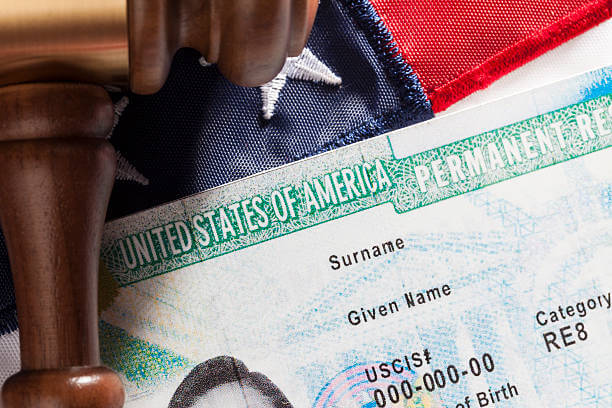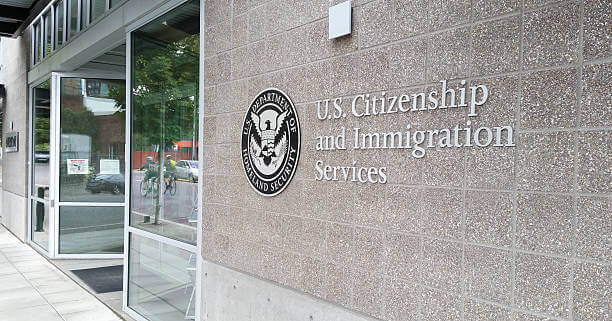If you are an immediate relative of a U.S. citizen, you may be able to become a lawful permanent resident (get a Permanent Resident Card) through the American Residency by Family Petition Process if you meet certain eligibility requirements.
Now, what is the United States family reunification? How to make a family petition? At Jaskot Law we will tell you everything you need to know about this immigration benefit and how you can use it to reunite with your loved ones.
If you are looking for legal advice to begin the process of U.S. residency by family petition, at Jaskot Law we can help you reconnect with the people you love. Call us at +1 (410)-235-6868 or email us at [email protected] and get in touch with one of our family based immigration attorneys.
What is the American Residency by Family Petition Process?
The process of american residency through a family petition is a procedure through which a U.S. citizen or a lawful permanent resident (green card holder) may apply for residency for certain members of his or her family.

Which family members can apply for american residency by family petition?
Through the american residency by family petition, citizens may petition for their spouse, unmarried children under the age of 21, married children or unmarried children over the age of 21. Lawful permanent residents, on the other hand, may apply for their spouse and unmarried children, but may not apply for married children or children over the age of 21.
However, there are other family members eligible to apply for a permanent resident card within the family-based “preferential immigrant” categories. Here is a table with the categories and the family members that fall into them.
| Category | Family |
| First preference (F1) | Sons and daughters of U.S. citizens, who are unmarried and 21 years of age or older |
| Second preference (F2A) | Spouses and children (unmarried, under 21 years of age) of lawful permanent residents |
| Second preference (F2B) | Unmarried sons and daughters, 21 years of age or older, of lawful permanent residents |
| Third Preference (F3) | Married sons and daughters of U.S. citizens |
| Fourth preference (F4) | Brothers and sisters of U.S. citizens if the U.S. citizen is 21 years of age or older. |
If you want to know more about the preference categories of the American residency by family petition process, you can read our article on this topic or contact one of our family-based immigration attorneys by calling +1 (410)-235-6868 or via [email protected].
What requirements must I meet to apply for an american residency by family petition?
To apply for family reunification in the United States through the american residency by family petition process, you must meet the following requirements:
- Be an immediate family member of a U.S. citizen or lawful permanent resident.
- Maintain a valid family relationship according to family-based “preferred immigrant” categories.
The other requirements vary depending on whether the petitioning relative is physically present in the United States or is abroad and must go through consular processing at a U.S. embassy or consulate.
If you are located in the United States, then you must meet the following requirements:
- Correctly file Form I-485, “Application to Register Permanent Residence or Adjust Status”.
- Have been “inspected and admitted” or “inspected and granted permission to enter” the United States.
- Be physically present in the United States at the time of filing Form I-485.
- Be eligible to receive an immigrant visa and have a visa available at the time you file Form I-485 and when USCIS makes a final decision on your application.
- Maintain the relationship with the relative who filed Form I-130, Petition for Alien Relative.
- Not be subject to status adjustment vetoes.
- Be admissible to the United States to obtain lawful permanent residence or be eligible for a waiver of inadmissibility or other immigration relief.
- Merit a favorable discretionary exercise by USCIS.
If you are in another country and must go through consular processing at a U.S. embassy or consulate, you must meet these requirements:
- Follow the corresponding consular process and submit the required forms and documents.
- Comply with the specific requirements of the corresponding preferential family category.
- Demonstrate that you have a valid and current family relationship with the U.S. citizen or lawful permanent resident who is sponsoring you.
- Comply with the admissibility requirements established by U.S. immigration laws.

How to file an application for U.S. residency by family petition?
To file your application for U.S. residency you must follow the steps below:
Complete Form I-130
Filing Form I-130, Petition for Alien Relative, is the first step and must be completed by the citizen or permanent resident petitioner, who is requesting residency for his or her relative. Be sure to fill out the form accurately and provide all required information.
Gathers the required documentation
Along with the Form I-130, you must attach the necessary documentation supporting the family relationship, such as birth certificates, marriage certificates, proof of relationship, etcetera. Carefully review the list of required documents and make sure you include everything you need.
Send the form and documentation
Once you have completed the Form I-130 and gathered the documentation, send the application to the U.S. Citizenship and Immigration Services (USCIS). You can file the form online or by post mail, following the instructions provided on the official USCIS website.
Awaiting approval
Once the petition is filed, you must wait for USCIS to process and approve it. This process may take some time, so it is important to be prepared to wait. We will discuss processing times later, but it is important to check the USCIS website monthly to get an estimate.
Application for adjustment of status or consular processing
If your relative is in the United States and is eligible for adjustment of status, once the Form I-130 is approved, you may file Form I-485, Application to Register Permanent Residence or Adjust Status. If your family member is outside the country, he or she must complete consular processing at the appropriate embassy or consulate of the United States.
Comply with additional requirements
During the process, you may have to comply with additional requirements, such as medical exams, fees and interviews, among others. Be sure to follow all instructions provided by USCIS and comply with all necessary requirements.
Obtain permanent residency
Once you have completed all the paperwork and fulfilled the requirements, if everything is favorably approved, your family member will be able to obtain permanent residency in the United States. This will allow you to live and work legally in the country as a permanent resident.

Remember that this is only a general summary of the process and there may be variations on a case-by-case basis. It is important to obtain current and accurate information from the official USCIS website or consult with an immigration attorney for personalized advice.
At Jaskot Law we can help you reunite with your loved ones through family reunification in the United States. Contact us at +1 (410)-235-6868 or email us at [email protected]. One of our experienced family based immigration attorneys will advise you with your case.
What documentation do I need to apply for an american residency by family petition?
To apply for an american residency by family petition, you must submit a series of documents along with evidence proving the family relationship. In the following table you can find all the documentation required by USCIS depending on whether you are the principal petitioner or the accompanying relative applicant.
| If you are… | Then you must present… |
| The principal petitioner | – Form I-485 Application to Register Permanent Residence or Adjust Status. – Copy of Form I-797, Notification of Receipt or Approval, and Form I-130, and Form I-130 filed in your name (unless you file Form I-485 with the I-130). – If you file Form I-130, Petition for Alien Relative, along with your Form I-485, you must submit all evidence at the same time. – Two passport size photos. – Copy of a government issued photo ID. – Copy of your birth certificate. – Copy of the passport page with the non-immigrant visa (if you have one). – Copy of the passport page with the admission stamp or entry permit issued by a U.S. government immigration officer (if you have one). – Copy of the Form I-94, Record of Entry/Exit, or a copy of the admission stamp or entry permit on the travel document affixed by Customs and Border Protection (CBP) (if you have one). If CBP issued you an electronic copy of Form I-94 when you arrived in the United States, you can print a copy of the paper version of Form I-94 from CBP’s website. – Form I-864 or I-864EZ Affidavit of Economic Sponsorship under INA Section 213A. – Form I-693 Medical Report and Immunization Record. – Records of all criminal charges, arrests or convictions certified by the police and the court, regardless of the final determination (if applicable to your case). – Form I-601 Application for Waiver of Grounds for Inadmissibility (if you have one). – Form I-212 Application for Permission to Reapply for Reentry into the United States After You Have Been Deported or Removed (if you have one). – Documentation of current or past J-1 or J-2 nonimmigrant status (if you possess one), including evidence of compliance with or waiver of the two-year foreign residency requirement under INA 212(e). – If you currently hold A, G, or E nonimmigrant status, you must include Form I-508. Form I-508 Petition for Waiver of Rights, Privileges, Waivers, and Immunities. – Form I-566 Interagency Application Register – Employment Authorization for A, G, or NATO Dependents or – Change of Status to/from A, G, or NATO Nonimmigrant Status (you only have A, G, or NATO nonimmigrant status). – Form I-485 Supplement A Adjustment of Status under Section 245(i) (if applicable to you). |
| The enclosed applicant family member | – Form I-485, Application to Register Permanent Residence or Adjust Status. – Copy of documents showing your relationship to the principal applicant, such as a marriage certificate, birth certificate or adoption decree. – Copy of Form I-797, Notice of Approval or Receipt related to the principal applicant’s Form I-130 (unless you file your Form I-485 with the applicant’s Form I-485). – Copy of Form I-797, Notice of Approval or Approval related to the principal applicant’s Form I-130 or a copy of the principal applicant’s Green Card (if not filing with the principal applicant’s Form I-485). – Two passport photos. – Copy of your government issued photo ID. – Copy of your birth certificate. – Copy of the passport page with the non-immigrant visa (if you have one). – Copy of passport page with admission (entry) stamp or entry permit issued by a U.S. immigration officer (if you have one). – Copy of Form I-94, Arrival/Departure Record, or a copy of the admission stamp or entry clearance from the Customs and Border Protection (CBP) that is on your travel document (if you have one). – Evidence that you have continuously maintained lawful status since your arrival in the United States (or evidence that you are exempt under INA 245(k). – Copy of Form I-864, Affidavit of Economic Sponsorship under INA Section 213A. – Form I-944 Declaration of Self-Sufficiency. – Form I-693 Medical Report and Immunization Record. – Police and court certified records of all criminal charges, apprehensions, or convictions, regardless of final disposition (if you have a criminal record). – Form I-601 Application for Waiver of Grounds for Inadmissibility (if you have one). – Form I-212, Application for Permission to Reapply for Reentry into the United States After You Have Been Deported or Removed (only if you were deported). – Documentation of current or past J-1 or J-2 nonimmigrant status (if applicable to your case), along with evidence of compliance with or waiver of the two-year foreign residency requirement under INA 212(e). – Form I-508, Petition for Waiver of Certain Rights, Privileges, Exemptions, and Immunities (only if you have A, G, or E nonimmigrant status). – Form I-566, Interagency Application Record – Employment Authorization for A, G or NATO Dependents or Change of Status to/from A, G or NATO Nonimmigrant Status (only if you have A, G or NATO nonimmigrant status). – Form I-485 Supplement A, Supplement A to Form I-485, Adjustment of Status under Section 245(i) (if applicable to you). |
This is a general list of the documentation required to file an application for an american residency by family petition. However, there may be certain exceptional cases that require other documents, such as United States family reunification for family members of refugees and asylees.
If you would like to know more about this last topic, you can consult our article on family immigration or contact one of our immigration and family lawyers directly at +1 (410)-235-6868 or through [email protected].
How long does it take to be approved for an american residency by family petition?
The time it takes to be approved for an american residency by family petition depends on multiple factors. Some of them are:
- Family preference categoryThe waiting time for an application for an american residency by family petition may vary depending on the family preference category under which the petition is filed and the immigration status of the petitioner (i.e., whether the petitioner is a citizen or a permanent resident). Some categories may have longer waiting lists than others.
- Visa availability: The number of immigrant visas available in each category may also influence processing time. Some categories may have a higher demand than visa availability, which may lengthen the waiting time.
- Complexity of the case: If your case presents special or complicated circumstances, such as eligibility or inadmissibility issues, the review and decision-making process may take longer.
- USCIS workload: The volume of family-based green card applications received by the U.S. Citizenship and Immigration Services (USCIS) can affect processing times. If there is a high demand or increased workload, there may be delays in processing applications.
- USCIS office that receives your case: Waiting times for your application for the american residency by family petition may also vary depending on which USCIS office receives your case. For example, it takes only 5 to 7 months to process the I-130 form in Nebraska for immediate family members of a U.S. green card holder, while in Texas it currently takes 17 to 23 months.

Please note that, in general, the processing time for an american residency by family petition can take between 5 and 37 months for immediate relatives of a permanent resident. In contrast, processing time could take between 5 and 16 months for immediate relatives of a U.S. citizen.
Therefore, it is important to check monthly on the official USCIS website and keep in mind that processing times are approximate and subject to change.
In addition, it is important to seek the assistance of an immigration and family lawyer who will follow your case closely and guide you through the legal courses of action and processing times.
At Jaskot Law we can help you reunite with your loved ones through family reunification in the United States. Contact us at +1 (410)-235-6868 or email us at [email protected].
Frequently Asked Questions
What is the American Residency Process by Family Petition?
The family petition process is an avenue by which a U.S. citizen or lawful permanent resident may apply for residency for certain members of his or her family.
Which family members can apply for an american residency by family petition?
U.S. citizens may apply for residency for their spouse, unmarried children under the age of 21, married children, or unmarried children over the age of 21. Lawful permanent residents may apply for residency for their spouse and unmarried children, but not for married children or children over 21 years of age.
What are the requirements to apply for the american residency by family petition?
The requirements vary depending on whether the petitioned relative is physically located in the United States or abroad. In the case of being in the United States, requirements must be met such as filing the Form I-485 correctly, having been inspected and admitted to the country, being physically present at the time of filing, being eligible to receive an immigrant visa, maintaining the relationship with the relative who filed the petition, among others.
How do I file an application for an american residency by family petition?
To file an application for an american residency by family petition, the following steps must be followed: complete Form I-130, gather the required documentation, submit the form and documentation to USCIS, wait for approval, file Form I-485 for adjustment of status or consular processing if abroad, comply with additional requirements, and finally obtain permanent residency.
What documentation is needed to apply for the american residency by family petition?
The documentation required varies depending on whether you are the principal petitioner or the accompanying family member. In general, forms such as the I-485, evidence of relationship, birth certificates, passport copies, affidavit of financial sponsorship forms, medical report and immunization records, among other documents, are required. It is important to consult the list of documents required by the USCIS depending on the specific case.

